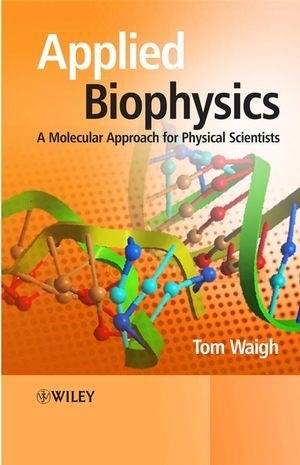Read more
Informationen zum Autor Tom A.Waigh , Biological Physics, School of Physics and Astronomy, University of Manchester, UK Klappentext This text presents a 'nuts and bolts' approach to the topic of biophysics. The presentation focuses on the simple underlying concepts and demonstrates them using a series of up-to-date applications.The book aims to explain the constructions and machinery of biological molecules, in a similar way as a civil engineer would examine the construction of a building or a mechanical engineer would examine the dynamics of a turbine. Little or no recourse is taken to the chemical side of the subject, instead modern physical ideas are introduced to explain aspects of the phenomena that are confronted. These ideas provide an alternative complementary set of tools to solve biophysical problems.The book begins with a discussion of the biological building blocks and the mesoscopic forces that occur between them. It then moves on to discuss such aspects as phase transitions, liquid crystallinity, motility, self-assembly and surface phenomena. The author then applies these principles to the behaviour of biomacromolecules, charged ions, polymers, and membranes. Furthermore applications in continuum mechanics, chromosomal structure, biorheology and modern experimental techniques are explored. Each chapter concludes with tutorial questions to challenge the reader as they progress through the text.It is hoped that the approach taken within this text will appeal to physical scientists at all levels who are confronted with biological questions for the first time, as they become involved in the current biotechnological revolution Zusammenfassung This book presents the fundamentals of molecular biophysics, and highlights the connection between molecules and biological phenomena, making it an important text across a variety of science disciplines. Inhaltsverzeichnis Preface. Acknowledgements. 1 The Building Blocks. 1.1 Proteins. 1.2 Lipids. 1.3 Nucleic Acids. 1.4 Carbohydrates. 1.5 Water. 1.6 Proteoglycans and Glycoproteins. 1.7 Cells (Complex Constructs of Biomolecules). 1.8 Viruses (Complex Constructs of Biomolecules). 1.9 Bacteria (Complex Constructs of Biomolecules). 1.10 Other Molecules. Further Reading. Tutorial Questions. 2 Mesoscopic Forces. 2.1 Cohesive Forces. 2.2 Hydrogen Bonding. 2.3 Electrostatics. 2.3.1 Unscreened Electrostatic Interactions. 2.3.2 Screened Electrostatic Interactions. 2.3.3 The Force Between Charged Spheres in Solution. 2.4 Steric and Fluctuation Forces. 2.5 Depletion Forces. 2.6 Hydrodynamic Interactions. 2.7 Direct Experimental Measurements of Intermolecular and Surface Forces. Further Reading. Tutorial Questions. 3 Phase Transitions. 3.1 The Basics. 3.2 Helix-Coil Transition. 3.3 Globule-Coil Transition. 3.4 Crystallisation. 3.5 Liquid-Liquid Demixing (Phase Separation). Further Reading. Tutorial Questions. 4 Liquid Crystallinity. 4.1 The Basics. 4.2 Liquid-Nematic-Smectic Transitions. 4.3 Defects. 4.4 More Exotic Possibilities for Liquid Crystalline Phases. Further Reading. Tutorial Questions. 5 Motility. 5.1 Diffusion. 5.2 Low Reynold's Number Dynamics. 5.3 Motility. 5.4 First Passage Problem. 5.5 Rate Theories of Chemical Reactions. Further Reading. Tutorial Questions. 6 Aggregating Self-Assembly. 6.1 Surfactants. 6.2 Viruses. 6.3 Self-Assembly of Proteins. 6.4 Polymerisation of Cytoskeletal Filaments (Motility). Further Reading. Tutorial Questions. 7 Surface Phenomena. 7.1 Surface Te...

